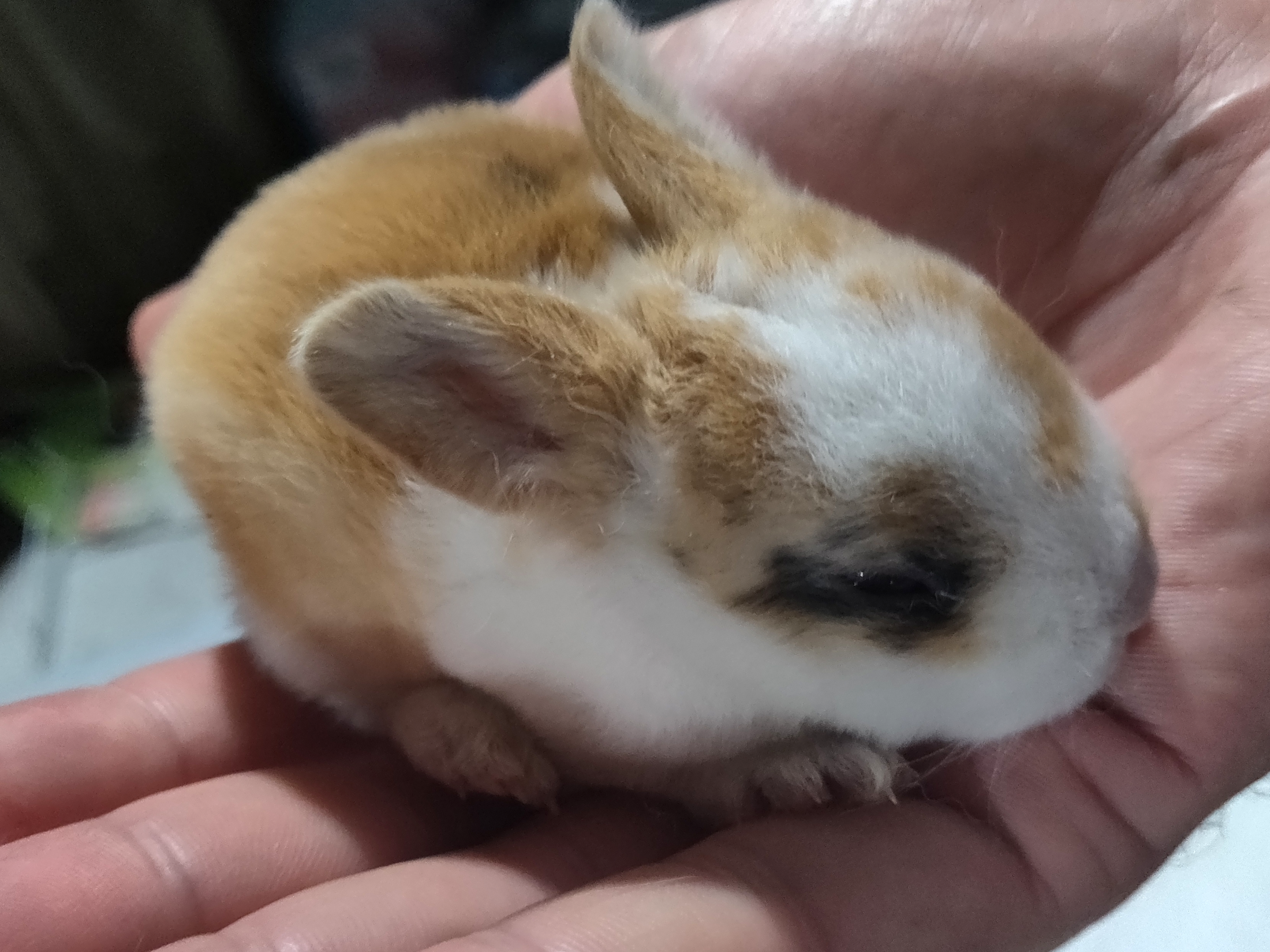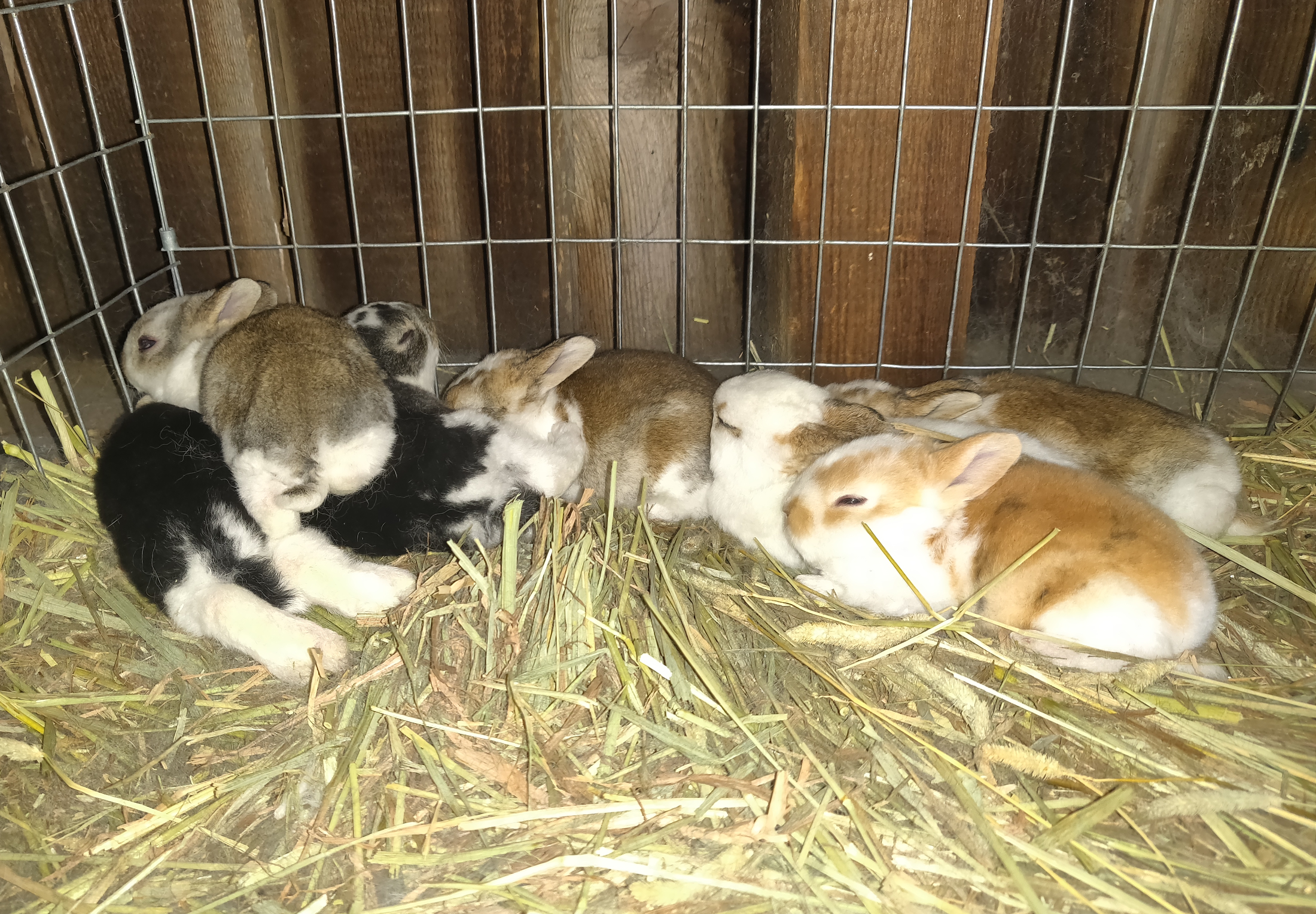Smudge had a new litter of eight baby bunnies on Sunday, July 17th, and today I got to take the nesting box out of their cage. So they are now bumbling around the cage and snuggling together in all of their fuzzy cuteness.
This litter was especially exciting for me because I have been wanting to bread tri-colors and harlequins specifically, but I didn't think I had the genes in my rabbitry. So it would mean finding another breeder with the right rabbit, bringing it home, and possibly waiting for it to be of breeding age to even begin the journey toward breeding tri-colors. However, one of Smudge's kits turned out to be a full blown tri-color.
If you don't know about rabbit genetics, tri-colors and harlequins are basically the same coloration. The only difference is that tri-colors have the broken (En) gene, which makes about half of their fur white. The harlequin gene (ej) is in the Extension gene group. In that group there is full extension (E) which is dominant, random extension or harlequin (ej) which is secondary to full extension, and there is non-extension (e).
Smudge is a broken castor, which gives her a full extension gene (E), and one of her previous kits with a different buck came out as non-extension (ee), which would mean that both Smudge, and the sire in that pairing carried the non-extension gene. If this is all confusing to you, the point I'm trying to make is that according to that previous litter, it shouldn't be possible that Smudge carries the random extension gene (ej) because she produced a non-extension kit (ee). So Smudge should be full extension (E) but carrying the non-extension gene (e), and wouldn't have room for the random extension gene (ej).
So my assumption was that maybe there was a random genetic mutation that gave me a tri-color kit this time around. Maybe I just got super lucky and fate wanted me to raise random extension rex rabbits. But in doing more research on how my impossible kindling happened, I learned something about the random extension gene. If it is carried behind the dominant full extension gene, and the rabbit is a castor, you can usually see subtle brindling in the brown and black coloration on the rabbit. It just so turns out that Smudge has random dark blotches around her face and back.
That was my first clue, and the only one I thought I would get. I figured Smudge might actually have the 'ej' gene that I wanted and the non-extension kit that she had previously was the anomaly. But now that this litter of kits has grown to fuzzy fluffball stage, I can make out more of their coloration. There are several that are either broken castors or broken ambers (which is a chocolate-based castor). Many of those rabbits also have very irregular coloration. So, I'm excited to see that I have a small adorable army of bunnies that are carrying the random extension gene! And don't worry. Once I start having harlequin and tricolor litters, I'll be sure to post the pictures!





